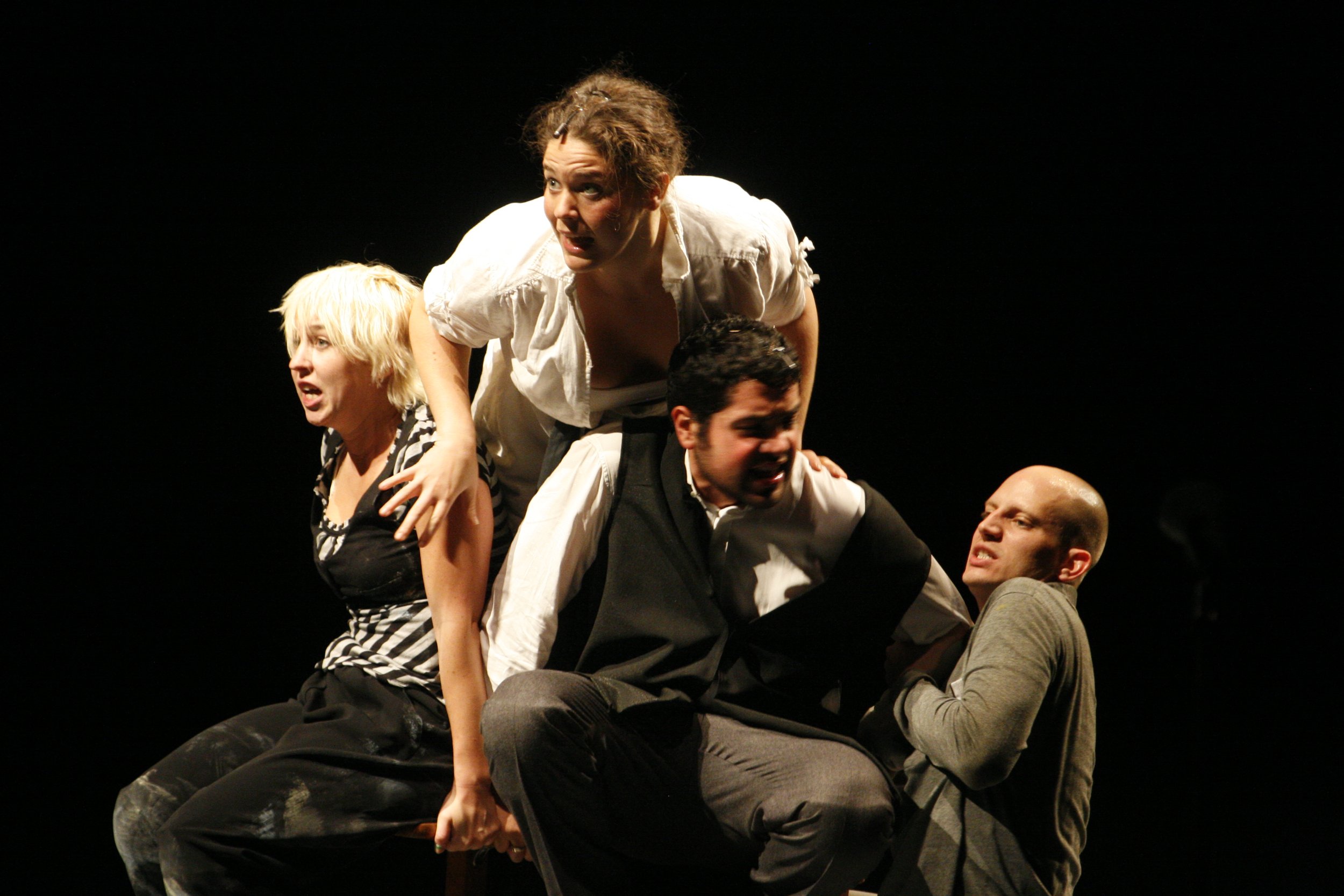














Mass MoCA 2009
Performers: Genevieve Belleveau, Abigail Nessen Bengson, Corey Dargel, Ricardo Vazquez
Composer/codirector: Nick Brooke
Codirector: Jenny Rohn
Set design: Sue Rees
Lighting design: Michael Giannitti
Production manager/stage manager: Madeline Best
Live mixing/sound design: Mike Rugnetta
Mass was premiered at Mass MoCA in Fall 2009, and at Bennington College in Spring 2006. Mass reworks pop tunes heard over the last 30 years, creating a kind of secular service based on ephemera of U.S. pop culture. Top-40 pop often doubles as religious incantations; the phrase "I believe" echoes from American Idol to Cher, and the "you" in U2 alternately means God or some romantic other. The piece is conceived like a mass someone might sing at home, quilted together from pop songs that identify some Americans more than religion.
If there's any scripture to this Mass, it's John Cage's Lecture on Nothing, a text spoken throughout the piece. Cage was America's most infamous musical innovator, known for his silent piece, 4'33". Cage originally titled 4'33" "Silent Prayer", and saw the piece as a commentary on radio, given that its length slightly exceeds the standard plug-in length of most muzak and pop tunes of the 1950s (4'30"). Cage’s later Lecture on Nothing elegantly expounds his philosophy of sound and silence; this text argues against ideas of musical and even cultural progress, celebrating that "more and more, we are getting nowhere"; the lecture climaxes in an enormous silence—notated, in Cage's writings, by the symbol M.
Cage was inspired, in his Lecture and elsewhere, by the radio stations of the 1950s and 1960s. His work Imaginary Landscape #2, was for 12 performers playing radios, each scanning the waves for stations. Cage seemed fascinated with how radio was a peculiarly American way of identifying oneself, through locating one's taste with an invisible, far-off station. One of those distant locations, felt throughout Cage's work, is Kansas. He refers to the silent M, the center of the Lecture, as a "bit like passing through Kansas"—it’s the eye of hurricane, Dorothy's home. In Jasper Johns' encaustic map of the U.S., Kansas looks like a black smudge, an explosion at ground zero. Mass is structured somewhat like Cage's Lecture and Johns' map—as an analogy to the space the U.S. inhabits, and the different "somewheres" Dorothy might go if she just taps her ruby slippers. The performers walk, run, and crawl across the stage towards a frontier, or collapse into the center like a critical mass; The stage becomes at points a map, a battlefield, a four-channel mixer, a reality show.
